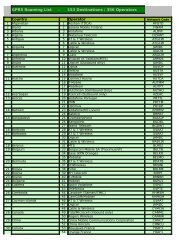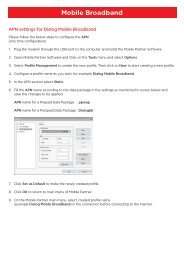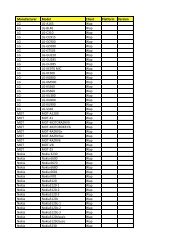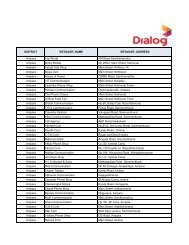Annual Report 2012 - Dialog
Annual Report 2012 - Dialog
Annual Report 2012 - Dialog
You also want an ePaper? Increase the reach of your titles
YUMPU automatically turns print PDFs into web optimized ePapers that Google loves.
(h) Dividend income<br />
Dividend income is recognised when the right to receive payment is established.<br />
<strong>Annual</strong> <strong>Report</strong> <strong>2012</strong> l <strong>Dialog</strong> Axiata PLC l 73<br />
2.24 Comparatives<br />
Where necessary, comparative figures have been adjusted to conform with changes in presentation in the current year.<br />
The adjustments made to comparative figures are given in Note 33 to the financial statements.<br />
3 Financial risk management<br />
Financial risk factors<br />
The Company’s and the Group’s activities exposed to variety of financial risks: market risk (including currency risk, fair value<br />
interest rate risk, cash flow interest rate risk and price risk), credit risk and liquidity risk.<br />
The Company’s and the Group’s overall financial risk management programme focuses on the unpredictability of financial<br />
markets and seeks to minimise potential adverse effects on the financial performance of the Company and the Group.<br />
Financial risk management is carried out through risk reviews, internal control systems, insurance programmes and<br />
adherence to the Company’s and the Group’s financial risk management policies. The Board of Directors regularly reviews<br />
these risks and approves the risk management policies, which covers the management of these risks. Hedging transactions<br />
are determined in the light of commercial commitments. Derivative financial instruments are used only to hedge underlying<br />
commercial exposures and are not held for speculative purposes.<br />
Market risk consists of:<br />
(i) foreign currency exchange risk – risk that the value of a financial instrument will fluctuate due to changes in foreign<br />
exchange rates.<br />
(ii) fair value interest rate risk – risk that the value of a financial instrument will fluctuate due to changes in market interest<br />
rates.<br />
(iii) cash flow interest rate risk – risk that future cash flows associated with a financial instrument will fluctuate. In the<br />
case of a floating rate debt instrument, such fluctuations result in a change in the effective interest rate of the<br />
financial instrument, usually without a corresponding change in its fair value.<br />
(iv) price risk – risk that the value of a financial instrument will fluctuate as a result of changes in market prices, whether<br />
those changes are caused by factors specific to the individual instrument or its issuer or factors affecting all<br />
instrument traded in the market.<br />
Credit risk – risk that one party to a financial instrument will fail to discharge an obligation and cause the other party to incur<br />
a financial loss.<br />
Liquidity risk (funding risk) – risk that an entity will encounter difficulty in raising funds to meet commitments associated with<br />
financial instruments.



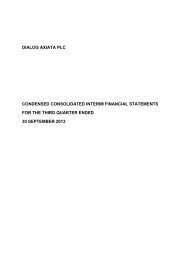
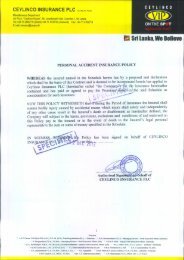
![nrypq;Nfh ,d;#ud;;]; nfhk;gdp ypkplw - Dialog](https://img.yumpu.com/15429071/1/190x245/nrypqnfh-dud-nfhkgdp-ypkplw-dialog.jpg?quality=85)
